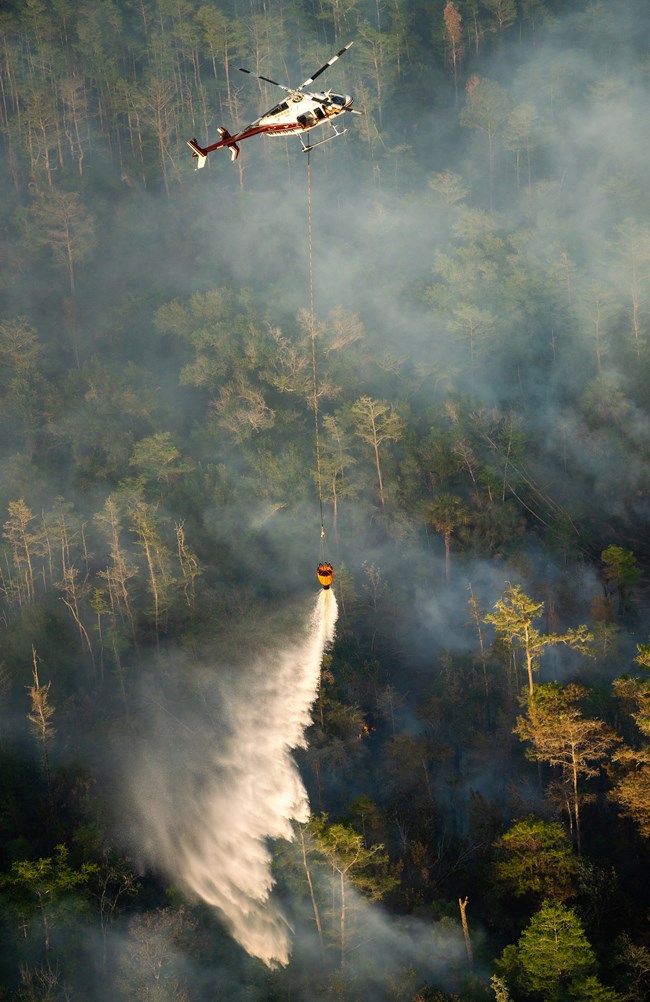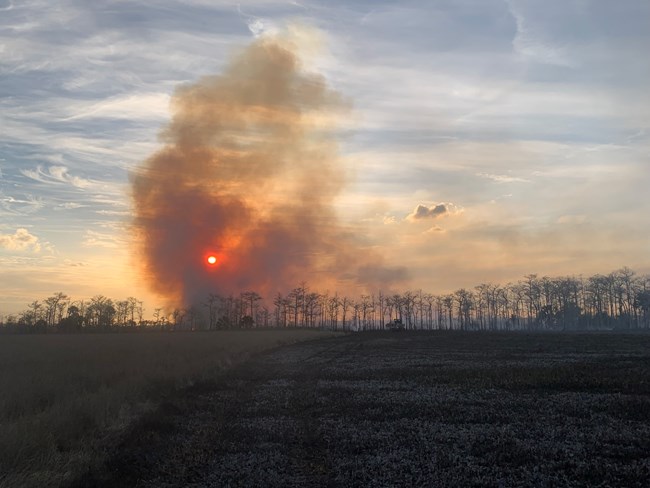Last updated: December 5, 2022
Article
Active fuels management leads to success for fire suppression

NPS/M GUE

NPS/M GUE
Big Cypress National Preserve had 21 wildfires in fiscal year 2022. Of these, only seven wildfires entered the extended attack phase, while 14 were contained during initial attack. Most of these fires intersected prescribed burn scars and areas that had been burned within 1-4 years, which limited fire spread. The most significant of these fires, the MM65 wildfire, grew to 420 acres, and fire managers were able to use the adjacent recent prescribed burn area in the long-term planning for fire growth. These strategies help reduce risk for firefighters by providing an area with reduced fuels that slowed fire growth. Firefighters were able to successfully contain the fire before it reached the recently burned area.
Everglades National Park had nine wildfires that totaled 172 acres in fiscal year 2022. Only one of these exceeded the initial attack phase, the Tarpon Bay wildfire, which burned 125 acres on the southern edge of the Coastal Prairies prescribed fire unit and adjacent to the River of Grass prescribed fire unit. Due to the proximity to recently treated areas, managers needed limited suppression efforts for the Tarpon Bay wildfire. Several of the other 2022 wildfires intersected with areas previously treated with prescribed fire which limited growth potential.
Across south Florida, the need for outside resource assistance has decreased as more wildfires are managed at a Type 3, 4, or 5 complexity level. The most recent incident requiring an outside management team was the Type 2 Avian Complex in 2018. This fire burned in an area that hadn’t seen fire in several years. Now, with the majority of SFFA operating under a 3–7-year prescribed fire plan, the likelihood of seeing fire grow to that size and intensity is minimal. With the successful treatment of National Park Service land in south Florida, as well as the unique abilities and quality of local leadership, SFFA resources can effectively manage the incidents within South Florida National Parks and Preserve boundaries.

NPS/B SHAW
